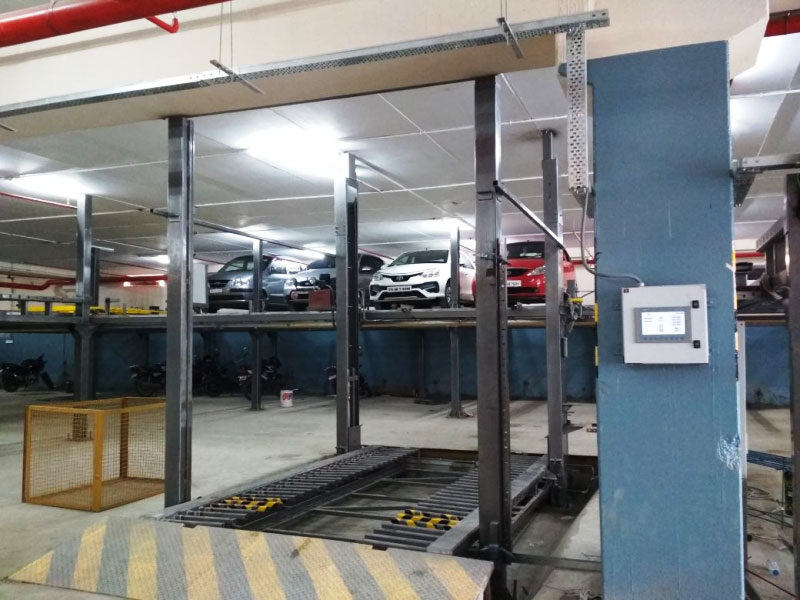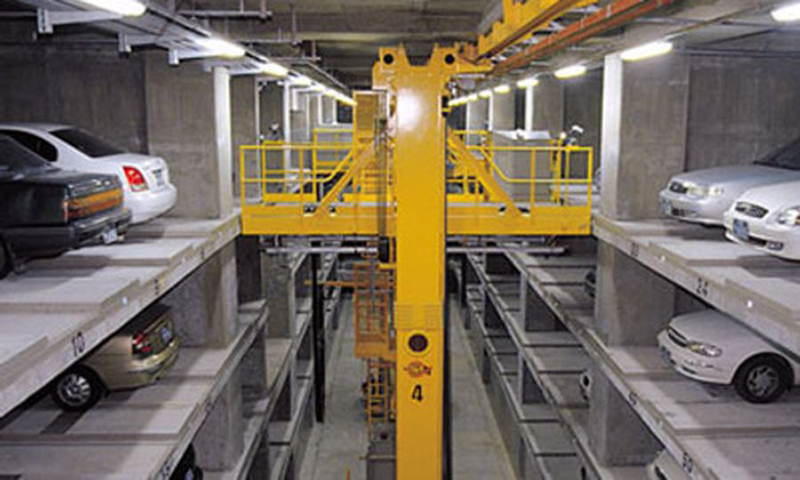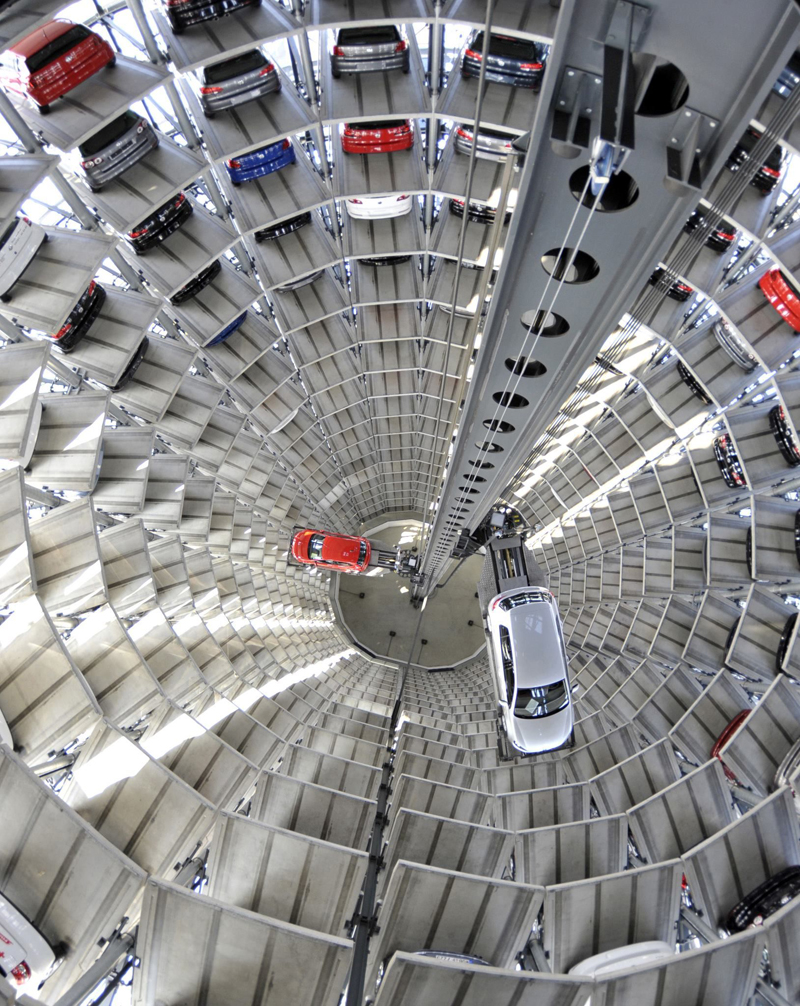An automated car parking is a mechanical system used to park a large number of cars in the minimum space available. The system helps to stack cars on multiple levels vertically resulting in maximizing the space for parking and minimize the use of land. Since it is a mechanical system there is no need for drivers. The system limits the time, money, and resources that would be typically spent when working to create fully functioning parking. It is also beneficial to pedestrian safety, as drivers and passengers do not have to make movements through a rough parking space. Automated parking systems offer many advantages and come in multiple types and forms.
Types of automated parking system
Automated parking system comes in two forms namely, fully automated and semi-automated. Fully automated parking systems do not need an attendant, and the APS’s mechanical processes will transport vehicles from the start of the garage into an empty parking space. Semi-automated APS also uses a mechanical system of some type to move a car to its parking space, however, putting the car into and/or the operation of the system requires some action by an attendant or the driver. Fully-automated parking systems typically accommodate parking structures that hold 100 cars or more, whereas semi-automated parking systems accommodate parking structures that hold less than 100 vehicles. Different automated car parking types fall under a fully automatic and semi-automatic car parking system each of them is explained below.
Shuttle Parking System
This type of parking system uses autonomous shuttles and elevators to park and retrieve vehicles. The pallet exchanger, or conveyor belts, located on the shuttle then park or retrieve a vehicle at the designated location by moving the vehicle from or to the shuttle and the parking space. The shuttles follow single path horizontal movement along fixed rails and storing vehicles on racks located perpendicular to both sides of the fixed rails. The structure is made of concrete or steel racking structure. Shuttle systems range from single level to multi-level and typically serve larger parking capacity. The parking system is exclusively suitable for basement and outdoor parking. In this system, the car enters into the lift on the ground floor. The lift carries the car to the floors. Each floor will have at least 1 shuttle to fetch the car from the lift and park the same in the fixed bays.

Puzzle Parking System
Puzzle Parking is a semi-automated system that features combination pallets that enable horizontal and vertical movement of parking spots just like a puzzle to park and retrieve cars. It is an independent parking system and can be easily configured and customized to any property criteria. The system comes with a mechanical device that multiplies parking capacity inside a parking lot. These parking systems are generally powered by electric motors or hydraulic pumps that move vehicles into a storage position. This system is suitable for outdoor parking.. These car parking types are identified in terms of matrices. In this system, the car enters into the car parking bay on the ground floor. Then the car is transferred into the lift by Car Pickup Pallet. The lift carries the car to the floors. Each floor will have at least 1 shuttle to fetch the car from the lift and park the same in the fixed Bays. Entry / Exit is on the Ground Level.

Rotary Parking System
The rotary parking system is specifically designed to accommodate multiple cars in the horizontal space of two. The structure can accommodate six cars in the space of two and can even be customised to hold a greater number depending upon the requirements of the user and can be efficiently put to use in many space-crunched areas. In this system, the car enters into the car Parking bay in the ground floor. Then the all the cars are rotated in clockwise direction, so that an empty bay reaches the ground floor. To unload a car, all the cars are rotated in clockwise direction, so that the selected car reaches the ground level. Now the driver drives the car out of the system, so that the next car can be loaded or another car can be unloaded.

Stacker Parking System
Stacker parking system has no pallet, it is performed by the moving device named “stacker”, also its entry and retrieval time of vehicle is fast. The system gives lots of convenience to the driver like the other systems did. Simultaneous moving of vertical and horizontal can make the time of entry and retrieval of the car very short. It consists of a robotic mechanism that pulls and pushes the car to and from the lift/parking bay.

Automated Guided Vehicle [AGV] Parking System
The AGV Parking System is designed to be installed in an enclosed parking vault. This parking system System can be installed in multiple regular and irregular configurations. It uses multiple levels above, on and below grade to maximize parking efficiencies.. The working principle of this based system is unlike a mono-path system, which is limited to one lane of lateral movement along a steel rail. AGV systems employ software systems that help to roll freely in any direction across solid concrete slabs enabling faster retrieval and the ability to work around obstacles. The system operates on solid, finished concrete floors. It can move in both lengthways and sideways directions along fixed paths and is also able to rotate on the spot. Vehicles are parked on platforms in transfer cabins which are then collected by AGVs that drive beneath the vehicle platform, lift it, then move it out of the transfer cabin and into the system. Its application includes warehouses where automation is required.

Rail Guided Parking System
The Rail Guided Cart (RGC) is quite similar to an Automated Guided Vehicle (AGV), however, the RGC utilizes a simplified design principle. Vehicles are parked on pallets in the parking modules which are collected from the parking modules by the RGCs driving beneath the vehicle pallet, lifting it, then moving it out of the parking module into the system. Since the RGC can travel in both the forward/reverse and side-to-side directions, the travel paths can be quite flexible and able to maneuver in tight confines. RGC systems operate on solid concrete floors and can move in both lengthways and sideways directions across small guide rails fitted to the floor.

Crane Parking System
Crane-parking systems use a separate lift component to perform the vertical travel in multi-level systems. It uses a single mechanism to simultaneously perform the horizontal and vertical movements of the vehicle to be parked or retrieved. The rails that the crane glides on are installed at the ceiling and floor and run down the center aisle. The crane mechanism moves horizontally on rails, typically located on the floor and ceiling of the parking system. It has a vertical elevator platform fitted where vehicles to be parked and retrieved are placed. The biggest benefit to this system is the ability of the crane to move in the up/down and left/right directions at once, thereby positioning itself quickly.

Silo Parking System
Silo systems are cylindrical with a single centrally positioned mechanism used to park and retrieve vehicles. Vehicles are parked at the outer edge of the core. The core is occupied by a lifting/rotating mechanism that accomplishes the vehicle positioning, typically allowing only one vehicle to be manipulated at a time. Silo mechanisms do however allow simultaneous up/down and axial positioning, which can move the vehicles quickly. Silo parking systems are installed underground and are most suitable where soil conditions are particularly unfavorable and it can also be installed above ground. Single or multiple parking modules are possible with silo systems but typically only one vehicle can be parked or retrieved at one time.

Tower Parking System
The tower parking system consists of a vehicle elevator with a parking space on either side of the elevator shaft. This format is repeated over several levels to complete the parking tower. In the tower parking system, the central machine unit only moves in a vertical direction. and parks the car on both sides. The greatest advantage of the system is that it can be constructed as attached to an existing building without causing any vibration or noise to the main building. The system also has a rotary mechanism at the bottom to rotate the car 180 degrees to drive the car directly forward.

Conclusion
Automated parking systems are often used in locations where a multi-storey parking garage would be too large or costly. It can also be applied in situations similar to multi-storey parking garages such as freestanding above ground, under buildings above grade and below grade. There are different types of parking systems available in the market, select the system that suits your parking project requirements.

